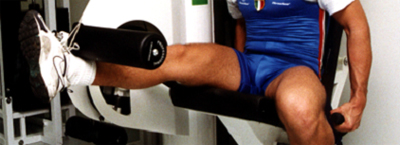the roto-translation motion
The idea came from the consideration that some athletes while using the "leg extension", as sports equipment for the extensor musculature strengthening of the lower limb, complained about knee pain.
Wanting to determine the causes of such pain, it was initially hypothesized the possible incompatibilities between the knee motion as joint subjects of the exercise and the kinematics of the movable arm of the machine that develops around a fixed center.
|
|
the knee motion Initially, was carried out a meticulous bibliographic analysis that almost unequivocally confirmed that the knee has a combined motion between rotation and sliding. In particolarly most of the authors consulted (Smidt, 1973; Fumagalli et al.,1977; Marinozzi end Pappalardo, 1977; Kapandji, 1977; Tittel, 1979; Fleischmann and Line, 1981; Nissel, 1985; Insall,1986, Draganich et al., 1987; Yamaguchiand Zajac, 1989;Melegatti, 1997; Steinbrück, 1997) agreed that for the first 25-30 degrees of flexion the femoral condyles (femur distal part ) roll on the tibial plateau (tibial proximal part); from 25-30 degrees onward, the femoral condyles combine the rotary motion with the translatory one (of sliding) that with the increasing of flexion, becomes more important. The cruciate ligaments retain the articular heads ensuring contact and antero-posterior stability of the knee during the whole movement. |

